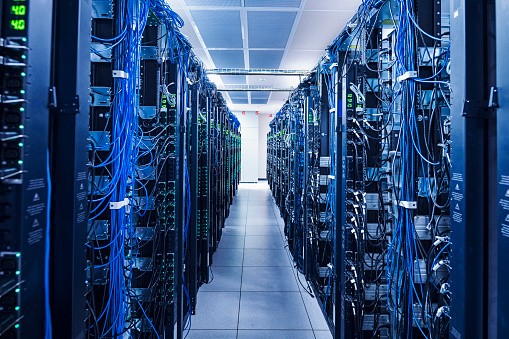Google's data centers are among the world's worst electricity guzzlers. But within the next decade, they plan to change all that.

According to CNBC, the search engine giant has announced its plans to make its data centers run on 100% carbon-free energy by 2030. CEO Sundar Pichai calls his company's aggressive goal "humanity's next big moonshot," as the data centers are planned to run 24/7 on renewables by then.
However, is this even possible?
Sky-High Electricity Bills
In short: a lot. In fact, these data centers are said to consume enough electricity to power entire countries. As per Forbes, Google data centers consumed around 12.4 terawatt-hours of power in 2019 alone, which is more than what countries like Sri Lanka and Zambia consume every year.
And in 2020, the company's electric bill just grew larger. An environmental report released last year revealed that the company's machinery consumed 15.5 terawatt-hours of electricity, which is said to be two times that the power consumption of the entire city of San Francisco.
If there's something you should know about these figures, it's that Google is mostly using power from conventional generation methods. Despite that, the Big Tech giant has claimed carbon neutrality as far back as 2007 by constant new investments in renewable energy.

How Has Google Fared So Far?
Making all Google data centers, cloud regions, and even office campuses run on green energy 24/7 by 2030 is a lofty, lofty goal. So how has the Big Tech icon fared so far?
Pichai states that a total of five data center sites (three in the United States and two in Europe) are already running on close to or at 90% carbon-free energy, reports ZDNet. Aside from that, they also stated that they've committed to spending around $4 billion to buy clean energy from over 50 wind and solar companies until 2034.
Read Also : Cloud Computing's Carbon Emissions Will Be A 'Main Purchasing Factor' By 2025--Gartner Report
That's not all. For almost two years now, Google has also been tracking weather patterns in an attempt to make its data centers "greener." By keeping abreast of weather data, the company is able to determine when it is best to switch their data centers to wind or solar power. And since the servers need to run 24/7 without fail, this is a considerable step to reducing their overall carbon emissions.

Potential Hardware Changes
Another thing that Google could do to achieve their lofty green energy goal is to perhaps make a major hardware switch. Last March, Tech Times reported that Arm-based chips are in high-demand in the server market, all for one reason: their excellent power efficiency compared to traditional x86-based chips.
As of now, Google is said to be using AMD EPYC processors in their data centers (via TechCrunch). These chips are indeed powerful, but they are incredibly power-hungry for the performance they put out. If they were replaced with an army of Arm-based chips, however, that could also bring Google's green energy initiative for the next decade on the fast track.

There's no indication that Google plans to switch to Arm-based processors for their data centers. But there are reports that the company is designing its own Arm SoCs to equip them into Chromebook laptops by 2023, according to The Register. And if they could do this for laptops, there's not a lot of reasons for them to avoid putting the chips to work in their data centers.
For now, it remains to be seen whether Google's data centers will indeed be more green within the next decade.
Related Article : Google Rolls Out 'Greener' Flight Search Tool | Which Flights are More Environmentally Friendly?
This article is owned by Tech Times
Written by RJ Pierce
ⓒ 2025 TECHTIMES.com All rights reserved. Do not reproduce without permission.




